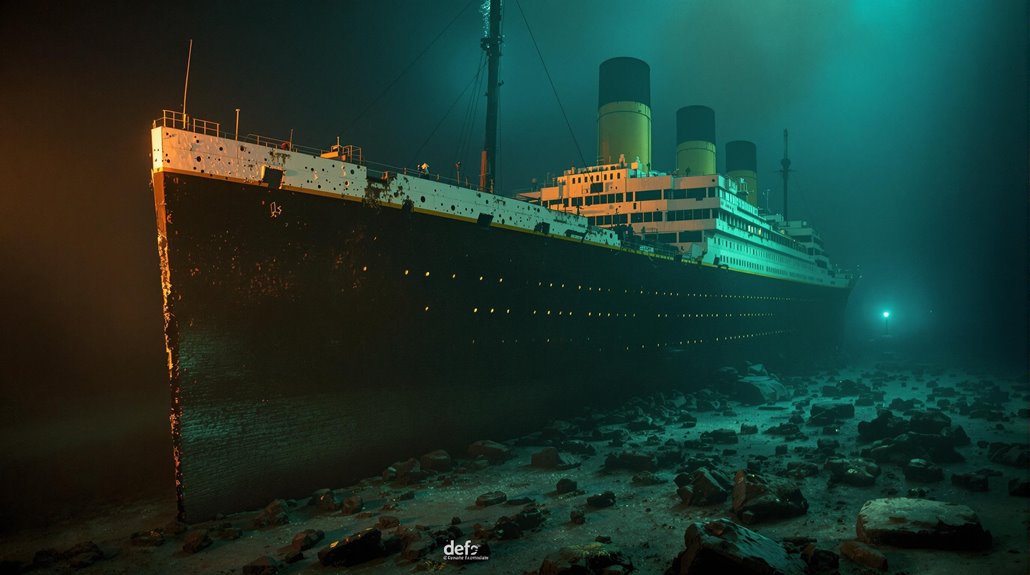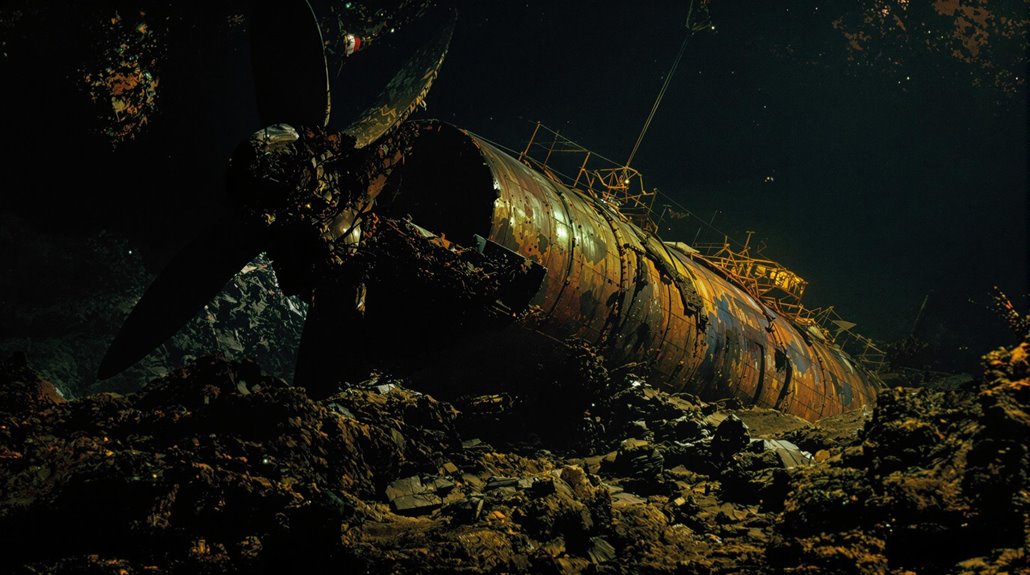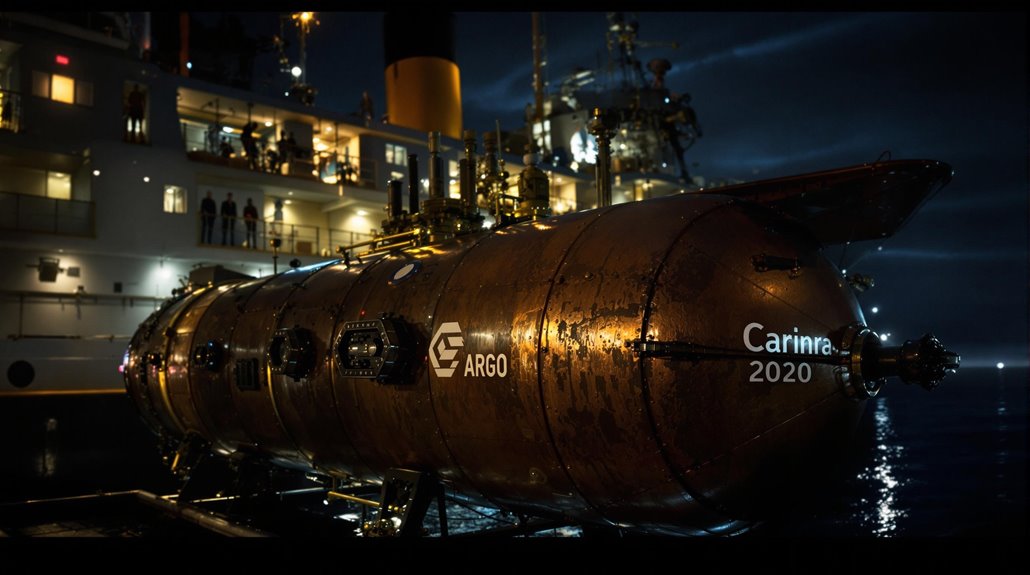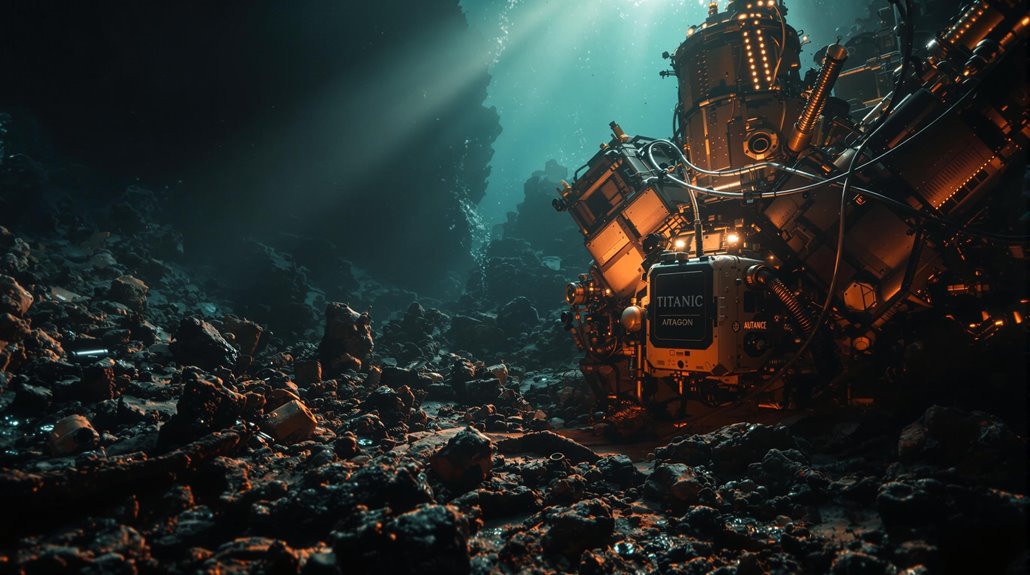They Found the Titanic by Searching for Lost Nuclear Subs
You might not realize that finding the Titanic wasn't the Navy's true objective in 1985. When oceanographer Robert Ballard agreed to search the Atlantic depths, he'd already made a secret deal to locate two lost nuclear submarines for the U.S. military. The Titanic discovery served as the perfect cover story, letting the Navy mask its Cold War mission from the Soviets. What happened during those classified dives would remain hidden from the public for decades.
The Cold War Submarine Mystery

While many associate deep-sea exploration with finding the Titanic, one of history's most intriguing underwater mysteries involves the Soviet submarine K-129, which vanished in the Pacific Ocean in 1968.
You might think a nuclear-armed submarine couldn't simply disappear, but that's exactly what happened 1,560 miles northwest of Hawaii.
The incident sparked intense submarine espionage between Cold War rivals. When Soviet search efforts failed, the U.S. secretly located the wreck using underwater acoustic data. Captain First Rank Vladimir Ivanovich Kobzar, a commander with extensive naval experience, led the ill-fated submarine mission. Robert Ballard's team would later use similar detection methods to find the Titanic.
The loss of K-129, along with three other submarine disappearances that year, raised serious concerns about nuclear safety at sea. While theories range from accidental sinking to collision with an American sub, the truth remains elusive.
What's clear is that 98 crew members, including 40 newcomers, were lost in this mysterious Cold War tragedy.
A Navy Deal With Hidden Motives
Although the discovery of the Titanic captured global headlines in 1985, you'd never guess the secret mission behind Robert Ballard's famous expedition.
The Navy struck a clever deal with Ballard as part of their naval strategy to locate sunken nuclear submarines while maintaining a public facade of searching for the historic shipwreck.
The classified missions involved:
- Locating submarines containing sensitive military technology
- Evaluating potential nuclear contamination risks
- Keeping Soviet intelligence in the dark about true objectives
You wouldn't have known it then, but Ballard had just 12 days to find the Titanic after completing the submarine search.
The Navy's cover story worked brilliantly – even most crew members remained unaware they were part of a covert military operation disguised as a civilian research mission.
Like companies sending misleading urgency emails, this deceptive approach mirrors how democratization and security often mask true motives of power in American military operations.
Deep-Sea Technology and Search Methods
Since discovering the Titanic required searching nearly 13,000 feet below the ocean's surface, the expedition team relied on cutting-edge deep-sea technologies that would revolutionize marine exploration.
The team's sonar advancements included side-scan systems that could map vast areas of the seafloor and penetrate sediments to reveal buried objects. These systems were designed with corrosion-resistant materials to ensure reliable long-term performance in the harsh underwater environment. Robert Ballard's team used these technologies while secretly searching for two nuclear submarines for the US Navy.
The search also pioneered underwater robotics, using both ROVs and AUVs to explore the depths.
You'll find these robotic systems were essential – ROVs provided real-time visual feedback through high-definition cameras and could be precisely controlled from the surface ship, while AUVs could operate autonomously for extended periods, methodically scanning predetermined search patterns.
The combination of advanced sonar and robotic systems created a powerful toolkit that would transform how we explore the deep ocean.
Beyond the Cover Story: Finding Three Wrecks
Before discovering the Titanic, the search team located two other significant submarine wrecks that proved essential to developing their deep-sea exploration techniques.
The maritime exploration team's experience with these submarine discoveries helped prepare them for their ultimate wreck discovery of the Titanic. Dr. Ballard secured crucial funding from the U.S. Navy to support these explorations. The mission was publicly presented as a Titanic search to maintain secrecy about the submarines.
Here's what you'll find remarkable about these three deep-sea discoveries:
- USS Thresher, found at 8,400 feet, revealed a widespread debris field of 134,000 square yards following its tragic implosion.
- USS Scorpion, located at 9,800 feet, split into two major sections, with its sinking cause still debated today.
- Titanic, discovered at 12,500 feet, featured a massive debris field spanning 5 x 3 miles, with its bow and stern separated by 2,000 feet.
Each discovery built upon the previous one's lessons, advancing deep-sea search capabilities.
How Military Secrecy Changed Maritime History

When Robert Ballard discovered the Titanic in 1985, the world didn't know they were witnessing the culmination of a classified military operation.
Military espionage and maritime exploration had long been intertwined, from the breaking of the Enigma codes to the search for sunken submarines carrying sensitive technology. A prime example was when the U-505 was captured in 1944, marking the first time in over a century that the U.S. Navy had seized an enemy vessel at sea. The captured submarine's code books proved invaluable for Allied cryptologists.
You can see this pattern throughout naval history, where public narratives often masked deeper military objectives.
The U.S. Navy's decision to use the Titanic search as cover for a classified mission wasn't unprecedented – it followed a tradition of strategic deception that protected crucial national interests.
Just as ULTRA intelligence remained classified for decades after WWII, the true story behind the Titanic's discovery stayed hidden.
This blend of scientific exploration and military secrecy has repeatedly shaped our understanding of maritime history.










